
Overview Development and origin of patent applications
In 2024, the German Patent and Trade Mark Office (DPMA) saw another slight increase of 1.0% in new patent applications. In total, it received 59,260 patent applications (national applications and PCT applications upon entry into the national phase) (2023: 58,662). We received 4.0% more domestic applications than in the previous year. After the years of the COVID-19 pandemic, the innovative activity in German companies seems to increase again; and, despite the difficult situation, German companies heavily invest in research and development. In general, the protection of innovations continues to be of great importance in industry.
After a patent application has been received, the applicants have seven years to initiate the examination procedure by filing an examination request with the DPMA. In 2024, the number of examination requests decreased slightly by 1.9%. This decrease might be an indicator that, after filing an application, companies wait and see how the invention competes in the market or how concurrent subsequent application procedures proceed at other patent offices. In 2024, the DPMA received 43,983 examination requests.
On a more positive note, in 2024, there was a considerable increase of 6.0% in concluded examination procedures (45,242). The reason for this increase is that, compared to the previous year, the number of withdrawals by declaration or by failure to pay annual fees rose by 14.8% to 13,122; this represents 29.0% of the concluded procedures (previous year: 26.8%). Many applicants probably consider which applications in their portfolio are dispensable for financial reasons.
However, a total of 23,944 of the concluded patent procedures were published grants; this is an increase of 7.1% compared to the previous year’s figure. Accordingly, the grant rate of 52.9% (2023: 52.4%) was once again high. Patents are deemed a key factor for the competitiveness and commercial success of technology companies.
There were 8,176 refusals (previous year: 8,881) in 2024 — a share of 18.1% of the concluded procedures (2023: 20.8%).
In total, 52,258 of the patent applications received (+2.0% compared to the previous year) were filed directly with the DPMA.
In addition, we received 7,002 PCT applications entering the national phase through the World Intellectual Property Organization (WIPO) in Geneva in accordance with the Patent Cooperation Treaty (PCT).
To obtain a patent abroad, applicants must as a rule file a separate application with the respective national patent office. As this often requires a lot of effort and money, the Patent Cooperation Treaty provides the option to achieve the effect of a national application in all PCTcontracting states by filing a single application. The PCT procedure starts with what is referred to as the international phase; subsequently, it transitions to what is referred to as the national phase.
Most applications at the DPMA are now filed electronically: 92.2% of all national patent applications we received were online applications. At the end of 2024, 153,654 national patents were in force, a 3.6% increase compared to the previous year.
In 2024, as in the previous year, there was once again a considerable increase in applications received from applicants having their residence or principal place of business in Germany. In total, these applicants filed patent applications for 40,064 inventions (+4.0%).
This means that the percentage of applications from Germany increased slightly to 67.6% (2023: 65.6%).
With 19,196 applications, the number of applications from abroad fell to just below the previous year’s figure (2023: 20,154).
We received 3,486 applications from European countries (2023: 3,593) and 15,710 applications from non-European countries (2023: 16,561).
The number of applications from France increased by 15.7% compared to the previous year. The number of applications from the United Kingdom (+11.1%) and from Ireland (+14.1%) also rose again.
Japan once again achieved a slight increase of 2.9% in its applications at our office. For the first time, the DPMA saw a decrease of 12% in applications from China; applications from the United States once again fell by 12.1%.
| Countries of origin | Applications | Percentage |
|---|---|---|
| Germany | 40,064 | 67.6 |
| Japan | 6,592 | 11.1 |
| United States | 5,885 | 9.9 |
| Republic of Korea | 1,324 | 2.2 |
| Switzerland | 901 | 1.5 |
| China | 817 | 1.4 |
| Austria | 812 | 1.4 |
| Taiwan | 588 | 1.0 |
| France | 368 | 0.6 |
| Sweden | 323 | 0.5 |
| Other | 1,586 | 2.7 |
| Total | 59,260 | 100 |
The automotive industry still plays a key role for patent applications for Germany. The ten top companies in terms of patent applications at the DPMA are carmakers and suppliers. 2024 was the 17th year in a row Robert Bosch GmbH came in first, with 4,496 patent applications and a large lead. Bayerische Motoren Werke AG, with 2,297 applications, took second place from Mercedes-Benz Group AG with 2,138 applications. With 1,409 applications, Dr. Ing. h.c. F. Porsche AG was fourth, dropping GM Global Technology Operations LLC with 1,299 applications to fifth place. In 2024, with GM Global Technology Operations LLC and Ford Global Technologies LLC (962 applications), two companies from the United States were once again among the strongest applicants at the DPMA. The individual companies and institutions are shown as they appear as patent applicants — without considering whether the companies are affiliated with each other.
Patent applications from Germany can be attributed to the individual German Länder based on the residence or principal place of business. In the German Länder ranking, Baden-Württemberg continued to be first, with 15,494 patent applications (+5.7%) and a big lead. Bavaria once again ranked second with 11,361 applications (+5.0%), ahead of North Rhine-Westphalia with 5,336 applications (-3.6%). The reason for their large application numbers is that these three German Länder are home to carmakers or other big technology companies. As in the previous year, the ranking changes slightly if the number of applications is compared to the respective population. With 137 patent applications per 100,000 population, Baden-Württemberg was ahead of Bavaria (85) in this ranking too. But, with 38 patent applications per 100,000 population, Lower Saxony pushed North Rhine-Westphalia (29) to fourth place.
In the case of applications filed by companies and research institutions, a distinction is usually made between the organisation filing the application and the inventor as a natural person. By contrast, in the case of independent inventors or employees with inventions released by their employers, the applicant and the inventor are usually the same person. In 2024, this was the case for 3.7% of the applications (2023: 4.1%).
The DPMA also tracks how many patent applications can be attributed to individual applicants. In 2024, 5.5% of our applicants filed more than ten applications each (2023: 5.1%). These applicants are referred to as major patent applicants; they accounted for 75.1% of all applications.
The decline in applications by independent inventors could be caused by the fact that, as digitisation increases and technology advances faster than ever before, it becomes more and more difficult for them to translate creative ideas into innovations and protect them through a patent application, as these two steps involve considerable costs.
The International Patent Classification (IPC) is used worldwide as a standard for the classification of technological contents. A code of letters and numbers organises the entire field of technology in more than 70,000 units. Every patent application received by the DPMA is attributed to one or several IPC classes according to its technological content and forwarded to the examining section in charge at our office.
With 40.1% of all patent applications filed with the DPMA in 2024, the “Mechanical engineering” sector continued to account for most applications. As in the previous year, the number of patent applications in “Electricity” as the second strongest sector also remained high. With 17,772 applications (+0.5%), the sector accounted for 30% of all patent applications. The “Instruments” sector (9,162 applications) and the “Chemistry” sector (4,382 applications) came in third and fourth, respectively.
The sectors are divided into technology fields. With 11,153 patent applications, “Transporting” (“Mechanical engineering” sector) was by far the strongest technology field, increasing by another 4.8% compared to the previous year. It goes without saying that, in this area, most applicants belong to the automotive industry. The majority of applications in the technology field “Transporting” were related to electric mobility and infotainment in vehicles. Subclass B60K, which includes, among other things, instrumentation and dashboards for vehicles, increased by 33.4%. In this subclass, innovations focus on new displays and options to operate instruments in the driver’s cab by voice and gestures. The number of applications concerning electric mobility also rose significantly: the subclass for the propulsion of electrically-propelled vehicles (B60L) increased by 14.4%.
Innovations in battery technology are crucial for electric mobility. They focus on improving charge capacities and times as well as on ensuring sustainable production and reducing production costs. As in the previous year, subclass H01M, which includes batteries and fuel cells, was once again the strongest class at the DPMA, with 2,627 applications (+3.4%). It is part of the technology field “Electrical machinery, apparatus, energy” (“Electricity” sector), where application numbers increased by 2.2% in total. As in the technology field “Transporting”, manufacturers and suppliers from the automotive industry are the most active applicants. Companies from this industry continued their trend towards withdrawing from their innovative activity concerning internal combustion engines: in the technology field “Engines, pumps, turbines” (“Mechanical engineering” sector), patents were filed for only 1,706 inventions, i.e. 5.4% fewer than in 2023 and only slightly more than a third of the applications received in this technology field in 2016.
Top 5 Fields of Technology1
Patent applications in 2024
1 According to WIPO IPC concordance table, available at: www.wipo.int/ipstats/en/index.html#resources.
A total of 43,983 requests for the examination of patentability pursuant to section 44 of the Patent Act (Patentgesetz) meant a slight decrease of 1.9%. If an applicant files such a request, the examining sections identify the relevant state of the art by conducting a thorough and comprehensive search. Subsequently, an examination is conducted as to whether the subject matter of the application is new, involves an inventive step and is industrially applicable and whether possible exclusions from patentability exist.
Another criterion for the examination is that the application documents disclose the technical invention described in the patent application completely and in such a way as to enable the carrying out of the invention. Applicants are notified of the examination result in a detailed office action, which usually requests them to comment on or correct the patent application. At the end of the examination procedure, the examining section decides whether and to what extent a patent can be granted or whether the application must be refused.
Another way to have the patentability of an application assessed is filing a search request pursuant to section 43 of the Patent Act. The result of this search is often the basis for the decision of whether to file subsequent applications with other offices. There was once again an increase in search requests by 4.6% to 16,337 (2023: 15,621). Our patent examiners were able to increase the number of concluded searches pursuant to section 43 of the Patent Act to 15,906 (+7.5%).
| patent procedures | 2020 | 2021 | 2022 | 2023 | 2024 |
|---|---|---|---|---|---|
| Examination requests received | 43,353 | 43,353 | 43,474 | 44,816 | 43,983 |
| - including requests filed together with applications | 23,393 | 22,694 | 22,685 | 23,991 | 23,629 |
| Search requests pursuant to section 43 Patent Act | 14,244 | 14,970 | 14,672 | 15,621 | 16,337 |
| Concluded searches pursuant to section 43 Patent Act | 16,451 | 15,169 | 14,818 | 14,797 | 15,906 |
| Examination procedures concluded | 41,768 | 48,521 | 45,520 | 42,671 | 45,242 |
| Examination procedures pending at the end of the year | 228,442 | 222,960 | 220,583 | 222,449 | 220,874 |
Parties can challenge decisions of the DPMA by way of an appeal to the Federal Patent Court. Such appeals can concern a patent not granted as requested, a refusal of the patent application or a decision in opposition proceedings. One of the Technical Boards of Appeal of the Federal Patent Court will then decide on the appeal. The Technical Boards of Appeal and Nullity Boards consist of legally and technically qualified judges. These technical experts — from science and engineering — are a particularity of the Federal Patent Court, as the judges at civil courts are mostly exclusively lawyers.
The technically qualified judges contribute their expertise to all proceedings that concern, among other things, the properties of a technical invention, e.g. in proceedings regarding the grant of a patent or an action for revocation of a patent.
In 2024, as in the previous years, there was once again a decrease in appeal proceedings brought before the Technical Boards of Appeal: a total of 222 appeal proceedings were received, which represents a decrease of 9.4%.

In Focus Digitisation and renewable energy sources
Digitisation
For the present analysis, we considered published applications with effect in Germany at the DPMA and at the European Patent Office (EPO), without double counting. Patent applications are usually published after 18 months. Accordingly, inventions newly filed in 2024 are not included in the analysis. We examined the five subsectors of digital technologies: computer technology, digital communication, semiconductors, audio-visual technology and IT methods for management.
After some considerable increases, the total number of published applications concerning digital technologies in 2024 was 49,073 and thus a bit smaller than in the previous year (-2.5%). However, in two subsectors, semiconductors (+3.5%) and audio-visual technology (+1.3%), we saw a slight increase. Innovations in artificial intelligence, which is now used in all subsectors of digital technologies, continue to play a major role.

Although there was a small decrease (-1.6%), most applications (17,387) were received in the subsector of computer technology, which includes inventions relating to image data processing, speech recognition and information and communication technology. Many of these innovations use artificial intelligence or machine learning.
The international ranking was led by the United States of America with 6,450 publications (+0.5%), far ahead of China (2,247, -14.5%). Germany followed in third place with 2,076 applications and a moderate increase of 6.6%. This means that, in a long-term analysis, Germany’s share in total applications in this area had slightly increased. In 2020, the share was 11.1%, last year’s share was 11.9%.
The top computer technology applicants were the South Korean company Samsung Electronics Co., Ltd. (952 patent applications), ahead of the Chinese company Huawei Technologies Co., Ltd. (797 patent applications), and the US company Microsoft Technology Licensing LLC (636 patent applications).
| Country | 2023 | 2024 | Change compared |
|---|---|---|---|
| United States | 6,418 | 6,450 | +0.5% |
| China | 2,629 | 2,247 | -14.5% |
| Germany | 1,947 | 2,076 | +6.6% |
| Japan | 1,727 | 1,584 | -8.3% |
| Republic of Korea | 1,268 | 1,410 | +11.2% |
| Others | 3,671 | 3,619 | -1.4% |
| Total4 | 17,661 | 17,387 | -1.6% |
1 Applications published by the DPMA and the EPO avoiding double counts.
2 According to WIPO IPC concordance table, available here. IPC classes valid at the time of retrieval counted proportionately; without claim to completeness; results may be included that do not relate to computer technologies.
3 G06C, G06D, G06E, G06F, G06G, G06J, G06K, G06M, G06N, G06T, G06V, G10L, G11C, G16B, G16C, G16Y, G16Z.
4 Due to rounding differences, the values added together deviate from the total.
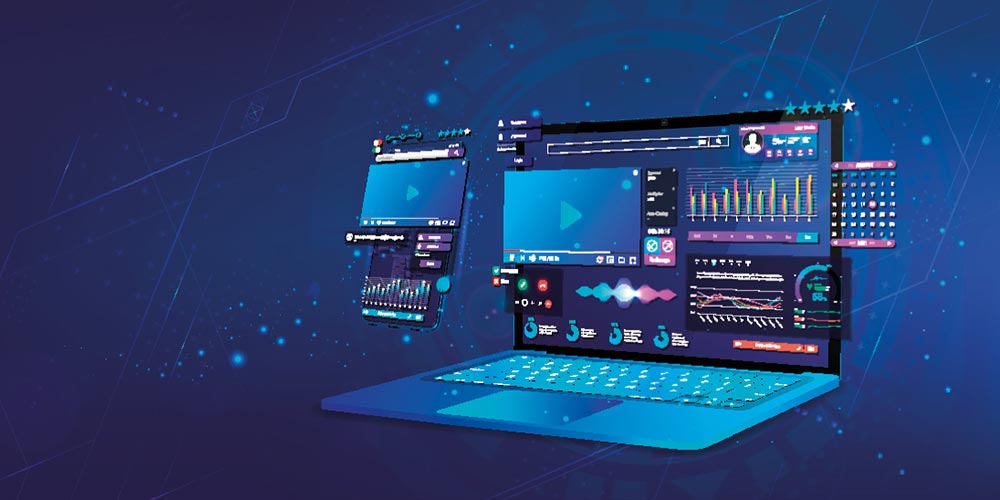
With 17,192 national and international patent applications (-6.6%), digital communication accounted for the second most publications. Many applications in this category are related to the current 5G mobile phone standard as well as future standards and are therefore important for the digital connectivity in a number of key technologies. Virtual communication also continues to play an important role in this area. Networked systems are used both in companies — e.g. for intelligent process and manufacturing control (smart factory) — and in the personal sector (smart home).
Again, the United States of America was the frontrunner with 5,174 applications (-11.4%), ahead of China with 4,608 applications (-11.7%). The Republic of Korea took third place with 1,704 applications (+2.3%), while Germany only reached seventh place with 665 applications (-5.1%). Accordingly, Germany’s low contribution to the total number of applications saw yet another decrease from 5.4% in 2020 to 3.9% in 2024.
In regard to companies, the US corporation Qualcomm Inc. took first place with 1,886 applications, followed by the Chinese company Huawei Technologies Co., Ltd., with 1,789 applications. One of the few European companies represented in the ranking of applicants, the Swedish Telefonaktiebolaget LM Ericsson (publ), came in third with 1,027 applications.
| Country | 2023 | 2024 | Change compared |
|---|---|---|---|
| United States | 5,841 | 5,174 | -11.4% |
| China | 5,217 | 4,608 | -11.7% |
| Republic of Korea | 1,666 | 1,704 | +2.3% |
| Japan | 1,173 | 1,321 | +12.6% |
| Sweden | 1,316 | 1,098 | -16.6% |
| Others | 3,197 | 3,288 | +2.8% |
| Total4 | 18,410 | 17,192 | -6.6% |
1 Applications published by the DPMA and the EPO avoiding double counts.
2 According to WIPO IPC concordance table, available here. IPC classes valid at the time of retrieval counted proportionately; without claim to completeness; results may be included that do not relate to digitisation.
3 H04L, H04N 21, H04W.
4 Due to rounding differences, the values added together deviate from the total.
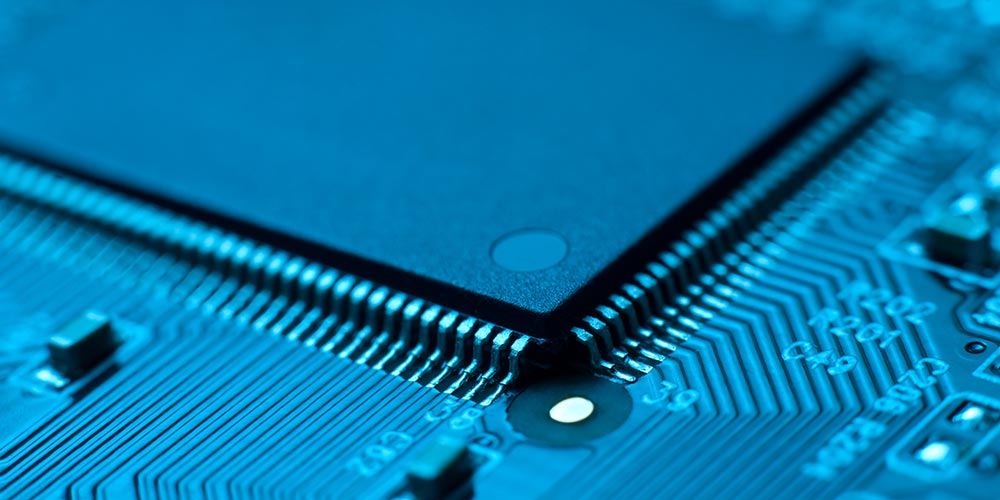
With a slight increase of 3.5%, the third-highest number of applications was achieved in the sector of semiconductors (6,228). Patent applications in this area are mainly for innovations concerning solid state electrical components or assemblies of components as well as semiconductor components. Semiconductor components are crucial for the strong and broad innovative dynamism of the digitisation of all application areas.
Japan topped this ranking with 1,244 applications (+4.3%), followed by the United States of America (1,202, -6.2%), the Republic of Korea (1,142, +29.0%) and China (787, -7.8%). Germany took fifth place with 703 applications (+17.4%). Compared to the last five years, the share of German companies in the total number of applications saw a significant decrease, from 14.8% to 11.3%.
Looking at the applicants themselves, the first three places were dominated by the South Korean companies Samsung Electronics Co., Ltd. (406 applications), Samsung Display Co., Ltd. (285), and LG Display Co., Ltd. (218), followed by Taiwan Semiconductor Manufacturing Co. Ltd. (199) from Taiwan.
| Country | 2023 | 2024 | Change compared |
|---|---|---|---|
| Japan | 1,193 | 1,244 | +4.3% |
| United States | 1,282 | 1,202 | -6.2% |
| Republic of Korea | 885 | 1,142 | +29.0% |
| China | 854 | 787 | -7.8% |
| Germany | 599 | 703 | +17.4% |
| Others | 1,202 | 1,149 | -4.4% |
| Total4 | 6,016 | 6,228 | +3.5% |
1 Applications published by the DPMA and the EPO avoiding double counts.
2 According to WIPO IPC concordance table, available here. IPC classes valid at the time of retrieval counted proportionately; without claim to completeness; results may be included that do not relate to digitisation.
3 H01L, H10B, H10K, H10N.
4 Due to rounding differences, the values added together deviate from the total.

With 5,752 applications and a slight increase of 1.3%, the sector for audio-visual technology came in fourth place. Its main focus was on inventions regarding virtual reality (VR) and augmented reality (AR). All kinds of business sectors apparently see an enormous potential for the future: by creating models of their “digital twins”, everything from products and machines to industrial facilities can be virtually visualised. For example, users can immerse themselves into a completely computer-generated world with what is known as virtual reality glasses.
In this sector, the United States of America with 1,246 applications (-6.5%) was followed by China (1,109, -6.1%), Japan (853, +3.0%) and the Republic of Korea (846, +24.8%). Germany came in fifth with 642 published applications (-0.3%).
In this subsector, too, the share of German applications slightly decreased, from 12.1% in 2020 to 11.2% in 2024.
In terms of applicants, Samsung Electronics Co., Ltd., from the Republic of Korea once again had the lead with 325 applications, followed by Huawei Technologies Co., Ltd., from China and LG Electronics Inc., also from the Republic of Korea.
| Country | 2023 | 2024 | Change compared |
|---|---|---|---|
| United States | 1,333 | 1,246 | -6.5% |
| China | 1,181 | 1,109 | -6.1% |
| Japan | 828 | 853 | +3.0% |
| Republic of Korea | 678 | 846 | +24.8% |
| Germany | 644 | 642 | -0.3% |
| Others | 1,015 | 1,056 | +4.0% |
| Total4 | 5,679 | 5,752 | +1.3% |
1 Applications published by the DPMA and the EPO avoiding double counts.
2 According to WIPO IPC concordance table, available here. IPC classes valid at the time of retrieval counted proportionately; without claim to completeness; results may be included that do not relate to digitisation.
3 G09F, G09G, G11B, H04N 3, H04N 5, H04N 7, H04N 9, H04N 11, H04N 13, H04N 15, H04N 17, H04N 19, H04N 23; H04N 25, H04N 101, H04R, H04S, H05K.
4 Due to rounding differences, the values added together deviate from the total.
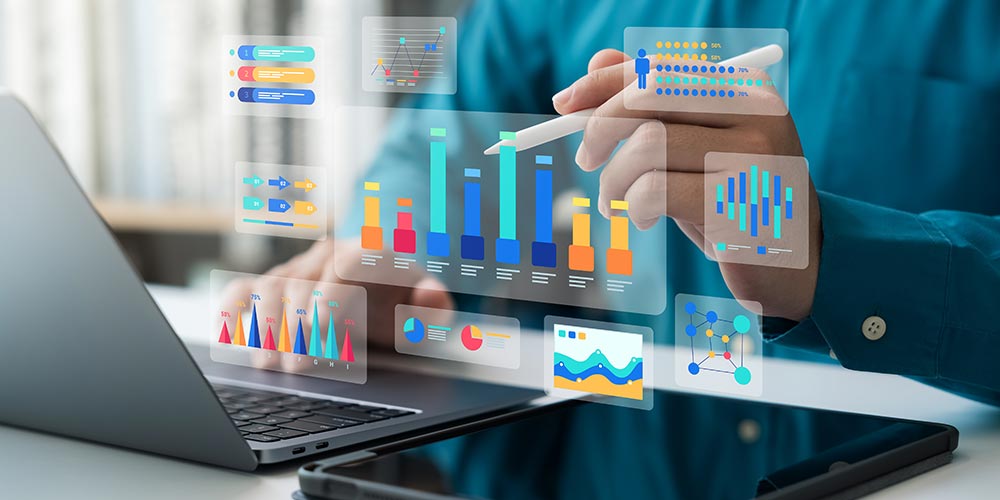
With 2,514 applications (-1.6%), the fewest applications were published for the technology sector “IT methods for business management”. This sector includes procedures for services like reservations and event bookings, workflow control, corporate or organisational planning as well as materials and inventory management. It also includes applications that deal with networked mobility such as autonomous driving. End devices, control systems and machines create ever larger networks, in which very large amounts of data (big data) are generated. These data require decentralised processing and storage. To this end, servers, storage, databases and analytics are made available on the internet (cloud computing).
In the international ranking, the United States of America (901, -4.5%) was ahead of Germany (407, +26.4%), closely followed by Japan (403, -10.6%).
Looking at the long-term development, German applicants in this technology sector made up ground. Their share in the total number of applications rose from 14.2% in 2020 to 16.2% in 2024.
The application numbers of individual companies in this sector were rather low and very close together. The German companies Bayerische Motoren Werke AG and Siemens AG shared first place with 45 applications each, ahead of Microsoft Technology Licensing LLC from the United States of America with 42 applications.
| Country | 2023 | 2024 | Change compared |
|---|---|---|---|
| United States | 943 | 901 | -4.5% |
| Germany | 322 | 407 | +26.4% |
| Japan | 451 | 403 | -10.6% |
| China | 161 | 148 | -8.1% |
| Republic of Korea | 101 | 86 | -14.9% |
| Others | 577 | 568 | -1.6% |
| Total4 | 2,554 | 2,514 | -1.6% |
1 Applications published by the DPMA and the EPO avoiding double counts.
2 According to WIPO IPC concordance table, available here. IPC classes valid at the time of retrieval counted proportionately; without claim to completeness; results may be included that do not relate to digitisation.
3 G06Q.
4 Due to rounding differences, the values added together deviate from the total.
Renewable energy sources and batteries
As in the previous years, German companies still had a strong interest in developing climate-friendly technologies. For this analysis, we considered the patent applications concerning renewable energy sources and battery technology with effect in Germany published by the DPMA and the EPO. In the international ranking, there were some sectors where we saw significant overall increases in applications by German companies, research institutions and independent inventors. In some fields, Germany ranked among the top countries.
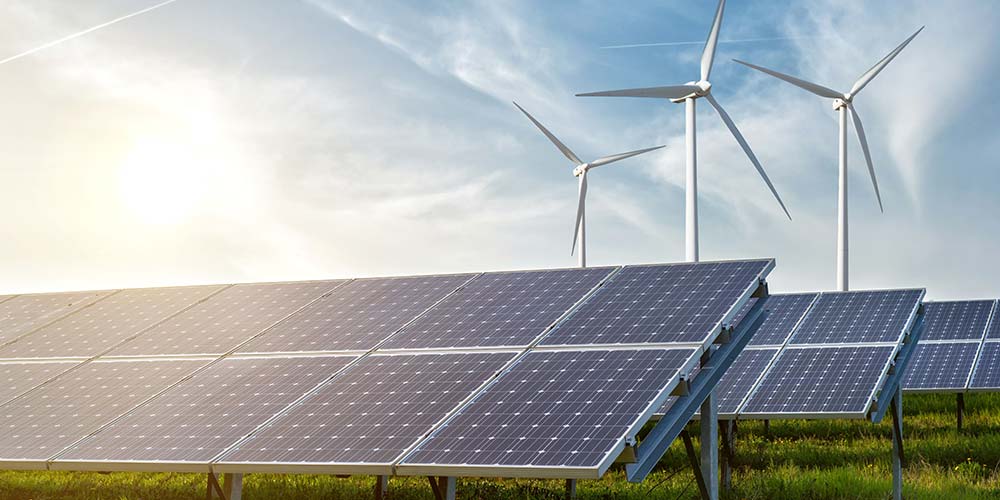
Wind and solar energy, biomass, geothermal energy and hydropower are all renewable energy sources. These natural sources are intended to be used for our energy consumption in the best possible way, with the primary aim to slow down man-made climate change. Power, heat and fuel can be generated from renewable raw materials too; and processes taking place in nature are used for energy production.
As in the previous years, Germany was among the leaders in important sectors of this field. In particular, Germany considerably increased its application numbers regarding solar energy (+57.3%). With 26.8% of all solar technology applications, it pushed China to second place (19.4%). As last year, Denmark took first place with 32% of all applications of wind generators, followed by Germany with a share of 23.7%.
With respect to wind generators, the ranking of applicants last year was led by Vestas Wind Systems A/S from Denmark with 69 applications; the previous year’s winner, Siemens Gamesa Renewable Energy A/S, came in second with 65 applications. Third place went to Wobben Properties GmbH, a German company, with 27 applications.
In regard to solar technology, the French Alternative Energies and Atomic Energy Commission and the Chinese company Trina Solar Co., Ltd, shared first place with 21 applications each, followed by the Chinese company Zeijang Jinko Solar Co, Ltd, with 20 applications.
1 Applications published by the DPMA and the EPO avoiding double counts.
2 IPC classes valid at the time of retrieval counted proportionately. Without claim to completeness. Results may also include other uses.
3 B60L 53/51, C02F 1/14, E04D 13/18, F03G 6, F24J 2, F24S, G05F 1/67, H01L 31/04 to H01L 31/078, H10F 10/00 to H10F 10/19, H10F 19/00 to H10F 19/90, H10F 77/42 to H10F 77/48, H10F 77/63 to H10F 77/67, H10F 77/80 to H10F 77/90, H02J 7/35, H02N 6, H02S, H10K 30/50 to H10K 30/57, H10K 39/10 to H10K 39/18.
4 B60L 53/52, F03D.
5 F03B 7, F03B 13/10 to F03B 13/26.
6 C02F 11/00, C12M 1/107, C12M 1/113, C12P 5/02, F03G 3, F03G 4, F03G 7/00 to F03G 7/08, F24J 3, F24T 10/00 to F24T 50/00, F24V 40/00 to F24V 40/10, F24V 50/00, F24V 99/00.
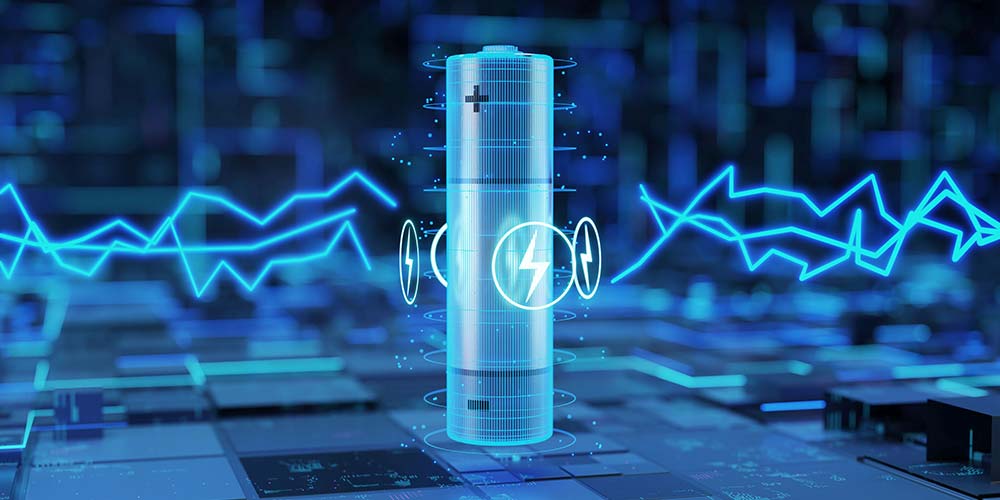
Renewable energy sources such as wind and sun are not equally available at all times. Therefore, energy storage systems like batteries are needed. In 2024, the upward trend in battery technology continued, probably also because of the strong innovative activity in the field of electric mobility. The numbers of applications concerning batteries once again rose by 16.6% compared to the previous year. Carmakers and their suppliers continued to be among the strongest companies in this field.
In particular, there was a strong increase in the number of applications from the United States of America and China compared to the previous year (by 33.1% and 22.6%, respectively). Nonetheless, the Republic of Korea still accounted for most applications (1,817) in this field. As in the previous year, China came in second (1,591). Japan was third (1,136), followed by Germany in fourth place (1,112).
Most applications relate to the development of sustainable and environmentally friendly batteries that can be produced at low cost and offer great energy efficiency and large capacity.
1 Applications published by the DPMA and the EPO avoiding double counts.
2 IPC classes valid at the time of retrieval counted proportionately. Without claim to completeness. Results may include automotive and other applications.
3 B60L 50/64, B60L 53/53, H01M 2, H01M 4/02, H01M 4/04, H01M 4/13 - H01M 4/84, H01M 10, H01M 50, H02J 3/28, H02J 3/32, H02J 15.

Perspective Tech start-ups need IP rights to succeed
The basis for sustainable growth, an important requirement for gaining the trust of investors: Barbara Diehl and Dr Antonia Schmalz from the Federal Agency for Breakthrough Innovation (Bundesagentur für Sprunginnovationen SPRIND) explain why industrial property rights are crucial for deep tech start-ups with ground-breaking new technologies to succeed as a business. To help spin-offs from research facilities and universities benefit from IP rights as well, SPRIND has developed a concept for the transfer of intellectual property.
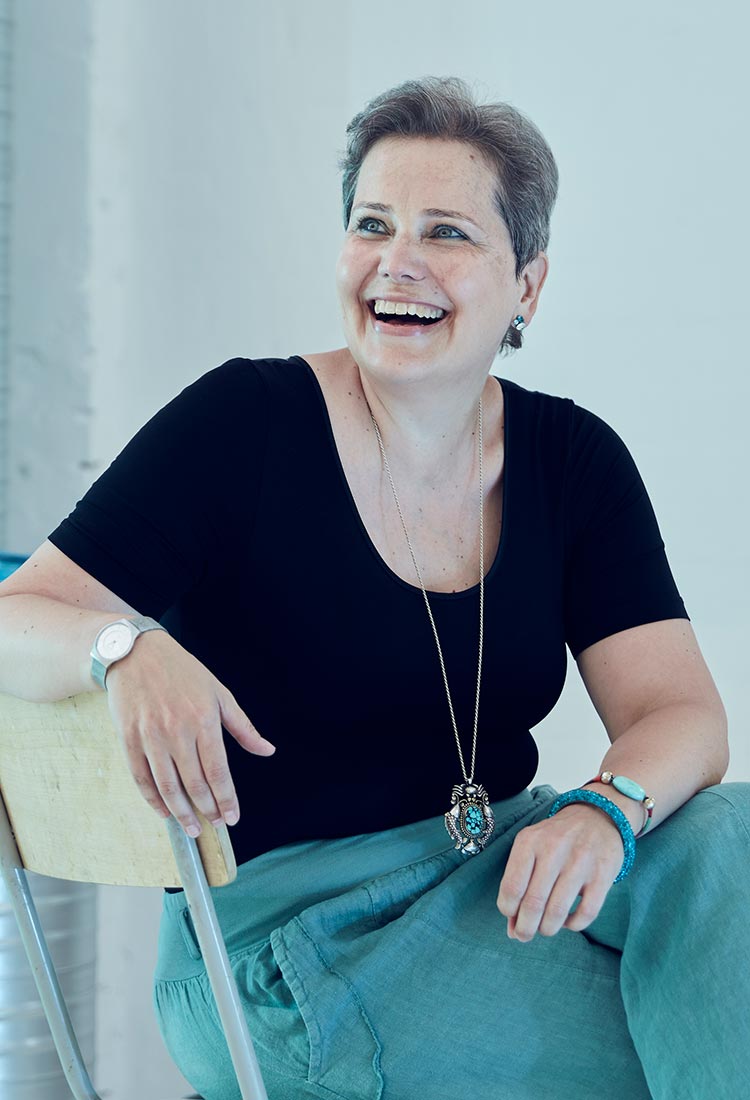
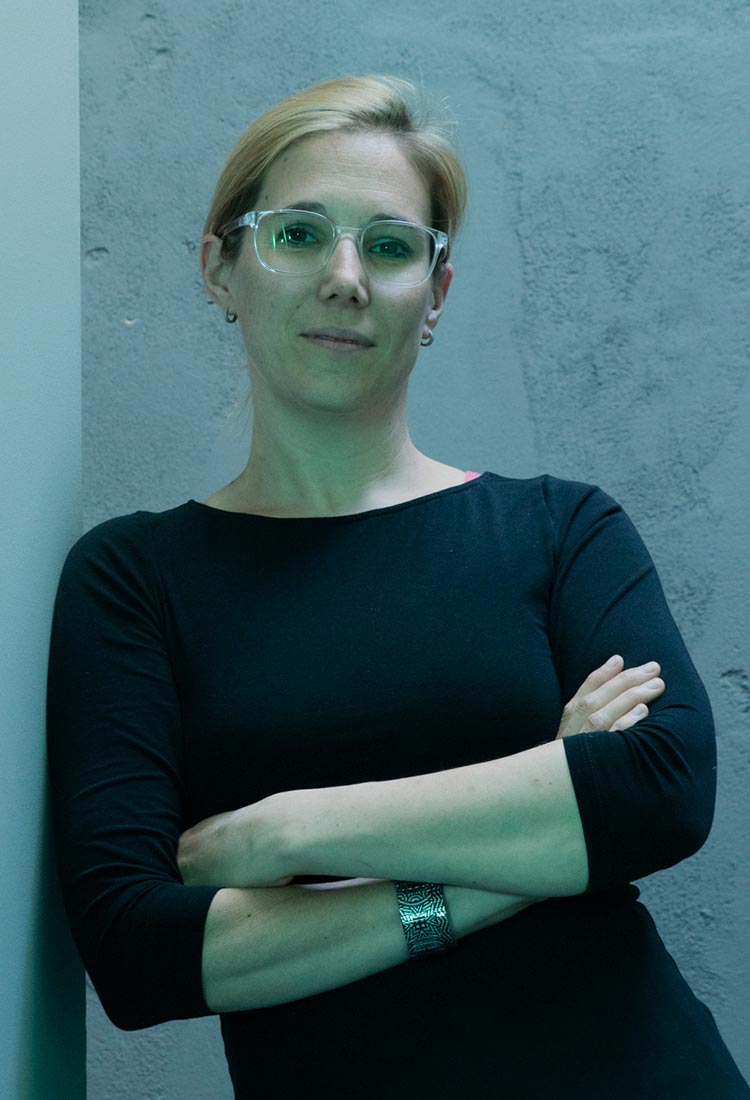
In the dynamic landscape of technology-driven innovation, deep tech start-ups are right at the forefront of progress. These companies are often founded based on ground-breaking scientific developments and address complex global challenges — from climate change and biotechnology to artificial intelligence. But technical excellence alone is not enough. There is one central, often underestimated asset that can be the key to success: a strong and well-protected IP portfolio.
Software start-ups, e.g. in fields like SaaS (“Software as a Service”) or consumer tech, can start operating with a comparatively low capital and a rather simple minimal viable product (MVP) and then iterate and scale when they have their first customers. Deep tech start-ups however require long development cycles and significant capital in the very early stages without being able to rely on income from customer orders. These investments therefore come with a high risk, since the technology has not yet proven itself in practice, nor can the general conditions and the development of the market and competitors be forecast in detail.
Together with know-how and process expertise, IP rights are a central asset and often crucial in determining the value and the unique selling point of a deep tech start-up in its early stages. If one manages to patent a technology, this creates a protected “object” which can be clearly distinguished from other existing technologies and which can then be traded, licensed, assessed and defended against competitors.
Most of the time, these aspects are already highly relevant in the formation phase of a start-up. Deep tech start-ups are often spin-offs from research facilities or universities and are usually based on IP rights that have emerged within the research context of an institution. The process of getting IP rights ready for commercial utilisation is called IP transfer and requires the spin-off to negotiate the terms of use with their respective institution. The duration of these negotiations can vary a lot and take six to 36 months, depending on the complexity of the situation. A recent survey conducted among German spin-offs revealed that, on average, the negotiations regarding the transfer of IP rights take 18.4 months. This delay can have serious consequences for spin-offs, as the innovative technologies often reach the market too late or are hindered in their development.
Since 2022, a working group convened by SPRIND, Stifterverband für die Deutsche Wissenschaft and Fraunhofer ISI has been working on practical solutions for the simplification and acceleration of IP transfers. Within this project, specific tools for the characterisation and evaluation of IP have been developed and tested in practice; this “Transfer pocket knife” is complemented by model contracts for various transfer scenarios and suggestions for conducting negotiations. But apart from the right tools, creating incentives to simplify and accelerate the processes on an institutional level also needs political support. Especially in the spin-off phase, speedy results are essential for start-ups. Concluding a contract should be doable within twelve weeks, as long as both parties approach patent negotiations with goodwill, stay focused and act according to the shared belief that both parties want to increase the proceeds for both sides and will openly disclose all aspects that affect the value.
In the current coalition agreement, the governing parties comment on IP transfers as well. They intend to present a national IP strategy that will enable spin-offs within 24 hours. In addition, they want to introduce obligatory standardised spin-off contracts at universities and research facilities that enable the utilisation of intellectual property in exchange for a share customary in the market.
Accelerated transfer processes and well-protected IP are a central topic for investors, who face enormously high investment risks in the deep tech sector: the technologies are new, the markets often unexplored and it can take years until a product can be brought to market. IP therefore plays an important role in the risk assessment. A granted or well-drafted patent application shows that the innovation does not only exist as a concept, but is of substance — and worth protecting. Investors want to make sure that a company can defend its position against imitators, especially against big corporations with more resources. A strong IP portfolio also significantly raises the company value when it comes to an exit by sale or to going public. Buyers or investors do not only pay for the product, but also for its legally protected exclusivity.
This is why intellectual property is no minor matter for deep tech start-ups — it is a central strategic asset. In a landscape that is characterised by long development cycles and technologies at risk of being imitated, patents and IP protection are the foundation for sustainable growth, gaining the trust of investors and achieving entrepreneurial success. If you focus on professional IP management at an early stage, you will not only increase the company value, but also your chances of succeeding in the market for the long term. However, right now the process of transferring and/or utilising IP rights from a research context to spin-offs is definitely too slow in Germany. There is a clear need for action regarding the number of staff and the degree of professionalisation in the transfer offices of research institutions (technology transfer offices, TTOs).
In focus Digital service for subsequent applicants
Global network for the benefit of applicants: since 2024, the DPMA has participated in the international WIPO DAS service, which ensures the electronic exchange of priority documents. You need such a document if you wish to obtain protection for an invention from foreign offices while retaining the date of filing.
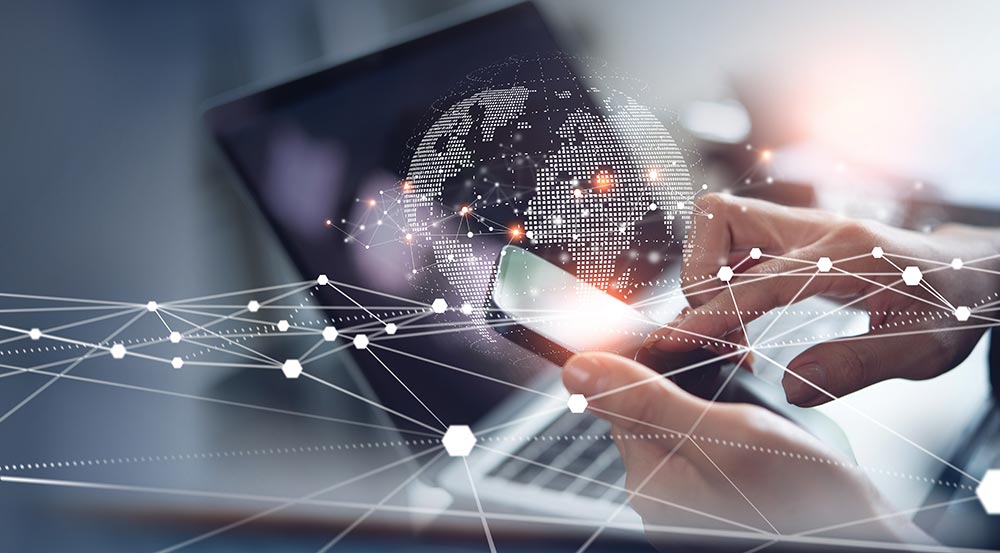
Provided by the World Intellectual Property Organization (WIPO), WIPO DAS is a service for the exchange of electronic priority documents. A priority document is the copy of a patent or utility model application that certifies the date of filing of an invention. It is issued and deposited in WIPO DAS by the office receiving the application. Applicants then have twelve months to file the invention in other countries, retaining the date of filing of the application.
Since 25 November 2024, the German Patent and Trade Mark Office (DPMA) has participated as “depositing Office” in the Digital Access Service of the World Intellectual Property Organization (WIPO DAS). This means that priority documents for patent and utility model applications filed at the DPMA are deposited in the WIPO system if applicants have so requested.
When requesting priority documents concerning patent or utility model applications, applicants can now choose between a paper copy of the priority document, which incurs fees (as before), and an electronic priority document in WIPO DAS, which is free of charge.
If a priority document is requested in WIPO DAS, the DPMA will notify the party filing the request of the deposit of the priority document in the system and provide a confidential access code. With the access code, the priority date and the priority file number, you can request all offices of second filing worldwide that participate as “accessing Offices” in WIPO DAS to retrieve the priority document.
The participation of the DPMA initially relates to patents and utility models as well as priority documents concerning both national applications and PCT applications with the DPMA as receiving Office. It is planned to extend this service to trade marks and designs, too. The participation as “accessing Office” is currently being planned, but there are still legal challenges to overcome.
Additional information on WIPO DAS is available on the DPMA website. More information can be found on the WIPO website.
Briefly explained: Double protection Make it a double!
New option for your IP strategy: since 1 June 2023, with respect to all unitary patents and all European bundle patents that have not expressly been excluded from the new Unified Patent Court system, applicants have had the option to additionally apply for a national German patent with the same or an overlapping scope of protection. This can bring great benefits.
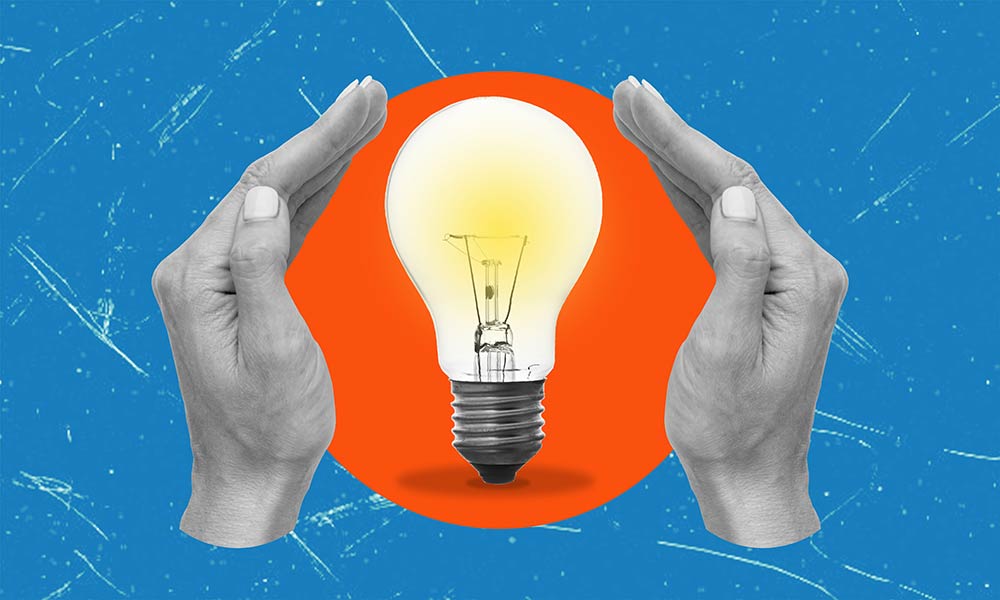
Until 31 May 2023, it was basically prohibited to seek double protection through national German patents on the one hand and nationally validated European patents (bundle patents) on the other. This means that it was not possible to obtain protection under a national patent for an invention for which a European patent with the same priority effective in the Federal Republic of Germany had already been granted. A previously granted national patent would cease to have effect if the applicant was subsequently granted a valid European patent for the same invention.
Upon entry into force of the Agreement on a Unified Patent Court (UPCA) on 1 June 2023, the European Unified Patent Court (UPC) was established and a new European IP right was introduced: the European patent with unitary effect, unitary patent for short. Within the scope of application of the UPCA, the UPC has since had jurisdiction over matters relating to all European patents, with or without unitary effect, especially over infringement and revocation actions. At the same time, double protection is possible. This means that a German patent can exist side by side with a European bundle patent or a unitary patent with the same priority and the same scope. The previous prohibition of double protection has since applied only to bundle patents that applicants exclude from the jurisdiction of the UPC (opt-out provision). As a result of such an opt-out, disputes relating to European patents become subject to the jurisdiction of national courts.
Competence of the Unified Patent Court
The key objective of the UPC is to increase legal security by harmonising decisions on patent infringements and validity. UPC decisions have unitary effect in all participating countries; parallel legal disputes in different countries are avoided. The establishment of the UPC included developing new rules of procedure. However, the new Unified Patent Court system has yet to fully find its feet, especially with regard to the rules of procedure, which provide for strict time limits and frontloading, i.e. the earliest possible submission of all relevant means of challenge and defence.
Basically, the benefit of central enforcement will always have to be weighed against the risk of central revocation and thus the complete destruction of the IP right, which would be without limitation to an individual country.
Ultimately, it has to be kept in mind that the current opt-out option will expire for bundle patents on 31 May 2030. Only national IP applications will then be subject to the jurisdiction of national courts.
Value of the national German patent system
Germany is the biggest market in Europe and among the participating countries of the unitary patent system. A German IP right alone reduces the market opportunities of competitors if they have to avoid Germany for their European activities. A European patent, which requires more effort and involves higher costs, is not always necessary.
The DPMA is a long-established office for the patent grant procedure. For many decades now, the national system consisting of the Federal Patent Court and regional courts has developed a stable and predictable case law. This ensures reliability and security.
New strategic options
Double protection strengthens the complementarity of the European patent and the national German patent. As a new strategic option, a national German patent can provide – in addition to its own value — a valuable fallback position should the unitary patent cease to be valid. The assessment of the patentability of the German IP right by a German court could differ from the assessment by the UPC. But even in the case of targeted infringement actions, proprietors of both a national German patent and a European patent can decide either to bring an action under the European patent before the UPC or to use the established German remedies under the German patent.
By the way, splitting off a German utility model from a German or European patent application can even result in “triple protection”. In the case of an opt-out of a European patent, a national IP right can still be obtained in the form of a utility model.